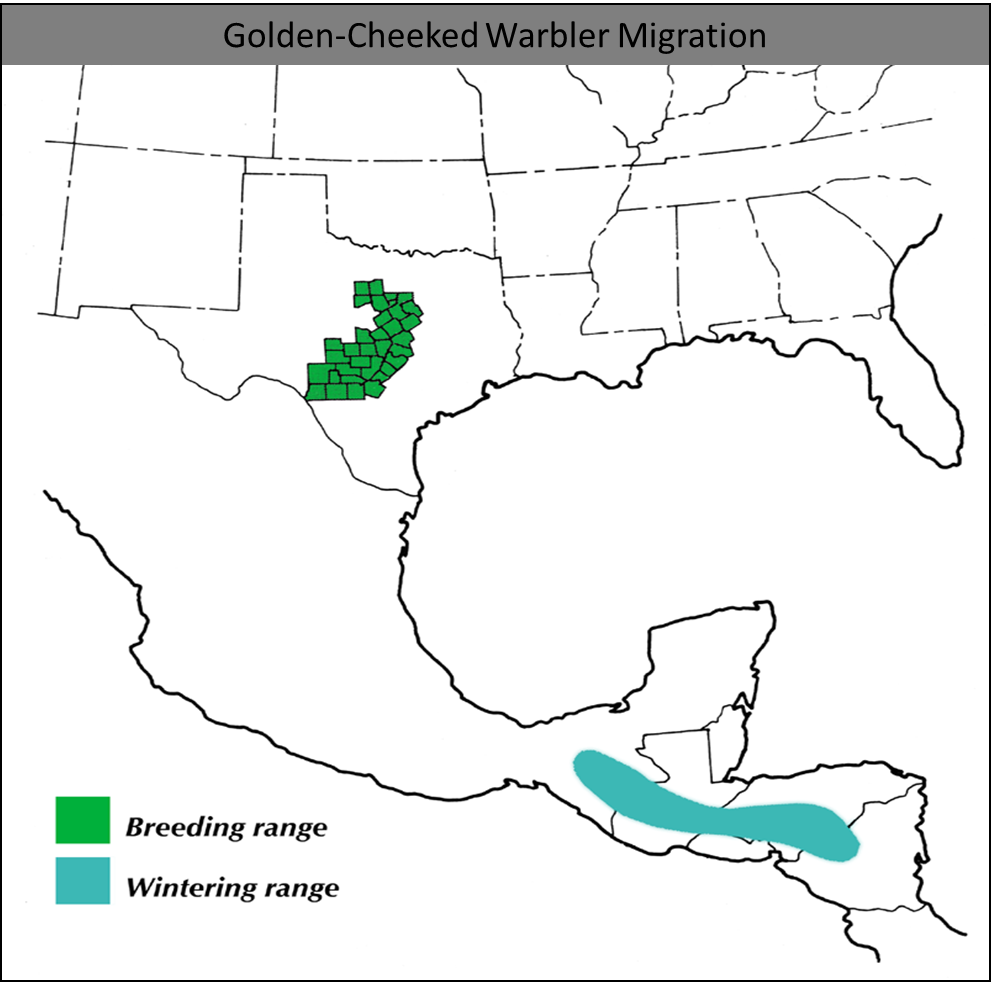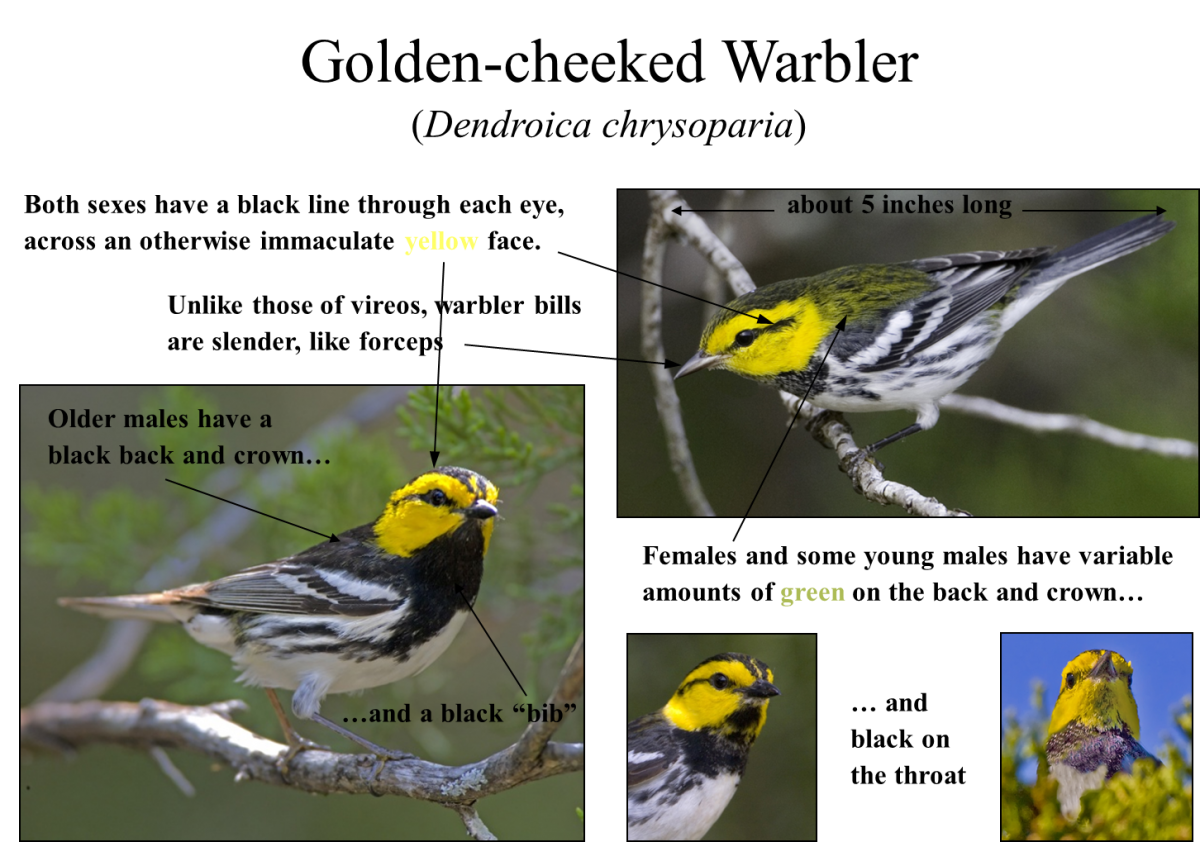Golden-Cheeked Warbler Nesting Season
Jonathan Scalise, City of Austin Balcones Canyon Preserve Biologist
[Reprinted with permission:
Austin Water Utility is owned and operated by the City of Austin.]
Migration is an incredible evolutionary development that is performed by a multitude of different kinds of animals from salmon, crabs, locusts, ladybugs, and butterflies to bats, elk, whales, and birds. These migrations can span hundreds of miles, cover great elevation changes, or cross great bodies of water. Even monarch butterflies have been documented moving 80 miles in one day. Migration is an adaptation that allows animals access to prime food sources or breeding grounds. Around here, spring usually marks the start of the migration performed by migratory birds. Many species of birds that fly south for the winter for the warmer weather and better food supply make the trek back north this time of year to reach their breeding grounds. The Texas coast is a great place to witness fallout, an amazing aspect of avian migration. Thousands of birds reach land after making the long flight across the Gulf of Mexico and it can seem like they are pouring from the sky to rest, recuperate, and refuel.
The Golden-cheeked Warbler is a species that overwinters in southern Mexico and northern Central America, where it lives in the forested mountain regions. In early March, male warblers begin arriving in Central Texas and choosing territories in forests of mature Ashe Juniper mixed with oak species. Amazingly, males often return to the precise territory they defended the prior year. They sing to let neighboring males know they are there and ready to defend their territory if necessary. Soon after, females begin arriving and pairing up with males. This annual migration event is timed with the seasonal increase of the local insect population. As each species of tree goes through its process of putting on new leaves, it becomes covered by insects that prefer the softer, immature leaves. Golden-cheeked warblers are insectivores and the staggered nature in which trees put on leaves in the spring ensures the warblers have plenty to eat during the metabolically demanding breeding season.

Just a couple of days after migrating back to central Texas and choosing a mate, female warblers choose a well hidden spot in a tree crotch or on a branch and get to work building their nest of strips of ashe juniper bark, spider webs, and feathers. They can finish their nest building in 5 days or less and then typically lay an egg per day for an average of 4 eggs. The baby warblers hatch 11 days later and 9 days after that are ready to leave the nest. By the time the young warblers are a month out of the nest they can essentially feed and fend for themselves (although they may still receive food from a parent) and will be soon ready to head south for their first time and continue the cycle of migration.
The City of Austin leads hikes to see the warblers each year, www.austintexas.gov/wildlandevents


